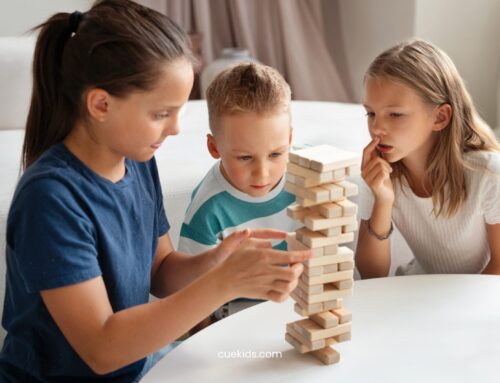Do you worry that your children do not interact with other people? Do you think they should connect with their peers and loved ones? So, here is how you can teach your child to be social and confident.
At an early age, children are naturally drawn to their parents. They hesitate to go to their relatives or sometimes with their peer groups. But the daily routines of story time, lunchtime, outdoor play or circle, and quiet time in childcare can expand their opportunities for social interactions. Children’s conversations with other people indicated some similarities, praising and feedback, questioning by the child, and listening to teachers or adults. They need to be among people that make them feel cared for. Interacting with other children can help them understand becoming co-independent, sharing, seeking involvement, or observing others in their peer group. Such interactive activities can boost their confidence and can build their cooperation, behavioral norms, and socio-communication and body language skills.
How Social communication helps children with non-verbal skills?
- Children can learn social communication in various ways using non verbal cues. Expressing emotions through facial messages, eyes, head, and other body languages can help them build social cognition and interaction.
- Children’s social and cultural differences in prosocial activity patterns indicate a sense of kindness, caring, and sharing toys that can benefit others.
- Communication skills can develop children’s well-being, self-identity, and sense of control with other peer groups. As children can convey their wants and needs, they can enhance their ability to be friendly with others.
- The term ‘modeling or identification’ refers to body language cues that children imitate from another child or an adult. Parents can provide a social model for their children to manage their emotions and oral or nonverbal conduct to guide them in the family and social surroundings.
- They can learn to develop their social and emotional skills while engaging in meaningful, encouraged, and rich body language experiences.
Read: Importance of Social Skills Your Child Should Learn Early On in Life

social and confident kids
Let’s learn about social communication skills to build body language in kids:
Social communication is an essential skill for children. It will help them express their ideas and feelings to understand body language cues in social interactions.
- Provide adequate time for imaginative play: it includes giving kids enough time to set up their views and plan their play dates with other peers to practice in social places such as restaurants, schools, and stores.
- Telling stories and discussing experiences: Parents can encourage children to share experiences of the stories they listen to or read. They can organize their thoughts aptly in this activity to improve their body language skills.
- Giving space and impromptu play: Giving children enough time to get acquainted with social situations to develop their skills naturally in unstructured playtime.
- Recognizing present emotions: children can identify their emotions and understand turn-taking. They learn to take pause for time to understand reactions and behaviors. Such as, one of their peers is sad and crying.
- Value their nature of differences: parents or caretakers need to understand that every child is unique and consider their preferences. These differences can be as being introverted or ongoing in a social space.
- Take inputs from professionals: parents can find engaging activities and ideas online for kids. They can seek help from ECE (Early Childhood Educators) professionals, childcare providers, and school teachers to improve children’s social communication and people skills.
Conclusion
To conclude, learning social communication and people skills can help children understand social interactions and identify the body language cues from other people. It is an essential skill a parent must teach their children to decode conversational signals and recognize their emotions to create a better social atmosphere and boost their communication and social skills.
References:
Gerholm, T. Socialization of verbal and nonverbal emotive expressions in young children, 2007, University of Stockholm https://www.diva-portal.org/
Halberstadt G Amy, Nonverbal communication: Developmental perspectives, January 2013, North Carolina State University, https://www.researchgate.net/publication/257332909
Kington Alison, Development of Social relationships, interactions and behaviors in early education settings, 2013, Journal of Early Childhood Research,
https://journals.sagepub.com/doi/pdf/10.1177/1476718X13492936
Web Sources:
https://www.education.vic.gov.au/
https://www.wellscreening.com/






Leave A Comment